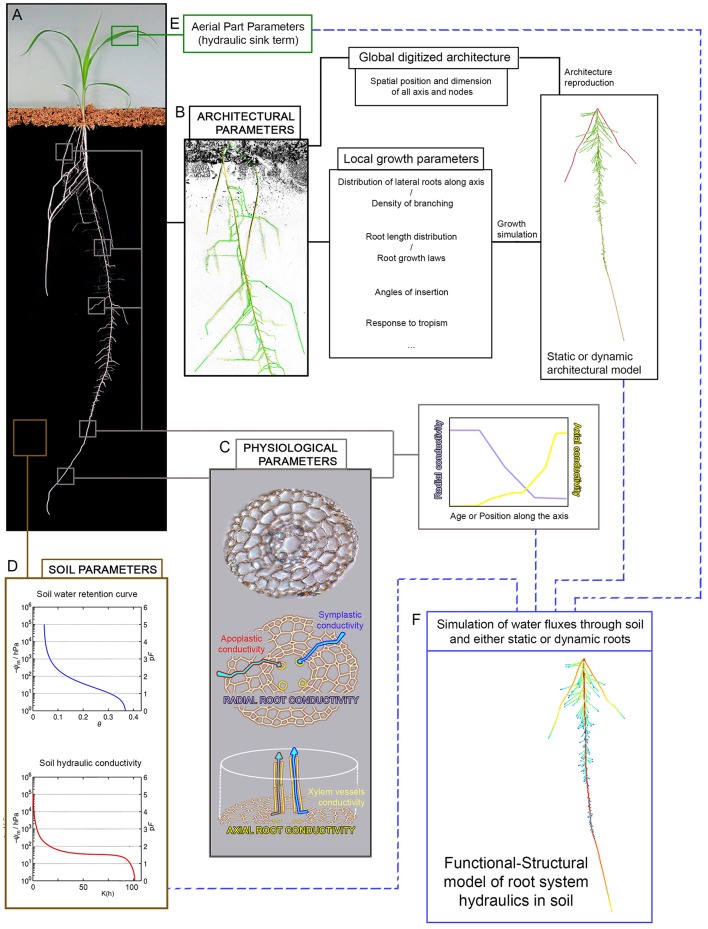Figure 1.
Parameters acquisition for root hydraulics models. The generation of root hydraulics models requires several set of parameters which are often model-specific. In the ideal case, those parameters are generated from phenotyping experiments. (A) The type of phenotyping setup available (see Table 1) will condition the type and amount of data usable for parameter definition, but in all cases they are at least able to provide root architecture data. Generally speaking, complete root hydraulics models including a soil compartment, such as R-SWMS for example, need four types of parameters. Architectural parameters acquired through image analysis of the root structure (B) can be used in two distinct ways: either the whole root architecture is digitized and the root structure is reproduced computationally, or the root architecture is used to determine local growth parameters which can in turn be used to create representative root architecture through growth simulation. Physiological parameters (C) relating to water transport are principally acquired through additional histological and physiological measurement. Radial root conductivity is a function of apoplastic and symplastic water transport and is hard to evaluate, often needing to be estimated through proxy such as pressure probe measurement in outer cells layers. Axial root conductivity is dependent on xylem vessel size and shape and can be partially extrapoled from cell measurement and application of Hagen-Poiseuille's law. Those two parameters need to be evaluated along the root axis and/or for different root ages to generate profiles of conductivity. Soil parameters needed (D) are soil water retention and soil hydraulic conductivity profiles, as well as an eventual description of the soil structure. Finally, depending on the model, aerial part parameters (E) can be more or less explicit and are used to express a hydraulic sink term driving water absorption by the root. Taken altogether, these four sets of parameters can be used to simulate the dynamic of water fluxes through the soil and roots and to study the patterns of water distribution under a given environment (F).

